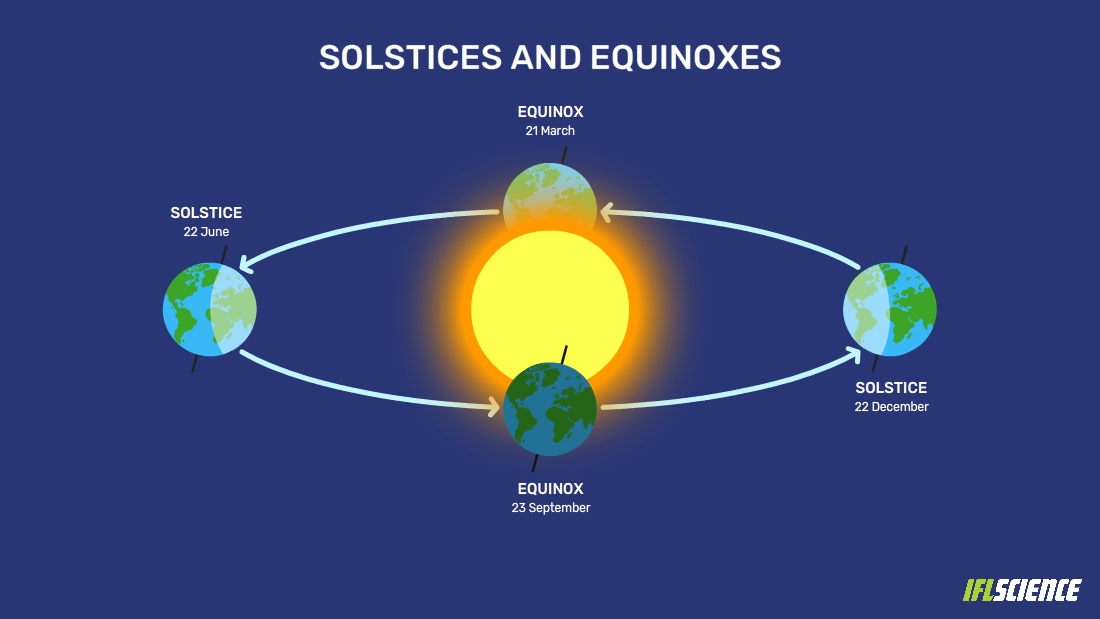Periodically throughout the year terms like equinox and solstice get banded around, with some people even going so far as to celebrate the summer solstice, or wish you a happy solstice in much the same way as other more well-known celebrations. But what actually is a solstice and an equinox and how are they different from each other?
Let’s start with the equinox
The equinoxes occur in March and September and are the times when the Sun is exactly above the equator at noon. In the Northern Hemisphere, this signals the start of spring in March, and in the Southern Hemisphere, it marks the beginning of fall or autumn.
The March equinox is often called the vernal equinox or the spring equinox. The term “equinox” comes from the Latin words “aequus” (equal) and “nox” (night), meaning equal night. As the Earth’s axis is tilted and our orientation towards the Sun changes throughout the year, there comes a point when the days lengths are roughly equal because the Sun is on the celestial equator. This gives roughly 12 hours of both daylight and night depending on your distance from the equator.
Because these equinoxes are measurable astronomical events that occur each year they can be predicted down to the minute. So in 2024, according to NASA, the March equinox will occur at 11:06 pm EDT on March 19, or 03:06 UTC on March 20.
The solstices and equinoxes follow on from each other throughout the year, all down to the position of the Earth’s axis in relation to the Sun.
Image credit: IFLScience
Moving on to the solstice
The solstice occurs twice a year: the winter solstice and the summer solstice. According to the Met Office, the latter occurs around June 21 in the Northern Hemisphere while the winter solstice happens around December 21.
At the summer solstice, the Sun reaches its highest point of the year while at the winter solstice, it reaches its lowest all year. This is the time in the year when the Sun’s path is the furthest north or south from the equator, writes Britannica, when the planet’s poles are either extremely inclined towards or away from the Sun.
The angle of Earth on its axis, which is roughly 23.5 degrees, plays an important role in the solstices. During the summer solstice, the Northern Hemisphere is tilted towards the Sun giving increased hours of sunlight in some places, such as the Arctic Circe, which can have a full 24 hours of sunlight. This leads to the idea of the winter solstice being the shortest day of the year and the summer solstice being the longest day of the year.
Solstices can also be defined by solar declination, which is the latitude of Earth where the Sun is directly overhead at noon. The solar declination refers to the angle between the Sun’s rays and the equatorial plane. At the summer solstice, the solar declination is about 23.5°N at the Tropic of Cancer, and in December, solar declination is about 23.5°S at the Tropic of Capricorn, explains National Geographic.
Source Link: Equinox Vs Solstice: Do You Know The Difference?
